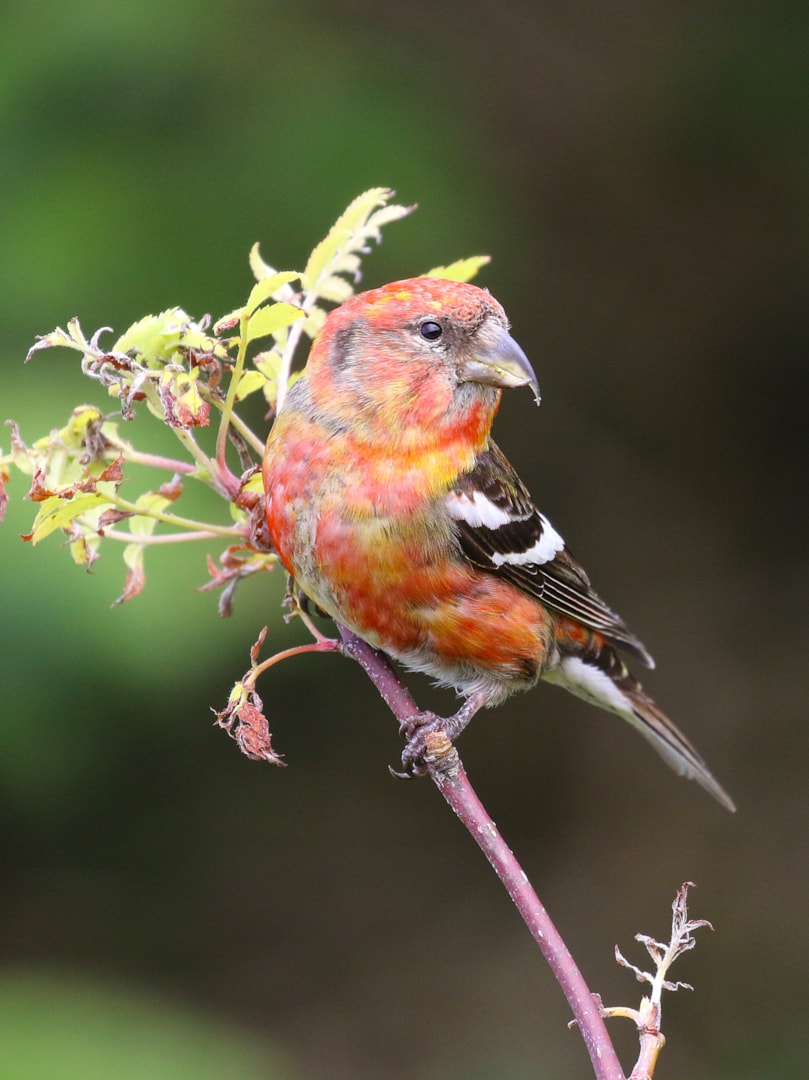
Twobarred Crossbill by John Irvine BirdGuides
Naturalized. Provisional. Escapee: Exotic species known or suspected to be escaped or released, including those that have bred but don't yet fulfill the criteria for Provisional. Escapee exotics do not count in official eBird totals. Learn about Two-barred Crossbill (American): explore photos, sounds, and observations collected by birders.
Twobarred Crossbill Outer Hebrides Birds
Year Category Criteria; 2016: Least Concern: 2012: Least Concern: 2009: Least Concern: 2008: Least Concern: 2004: Least Concern: 2000: Lower Risk/Least Concern: 1994.
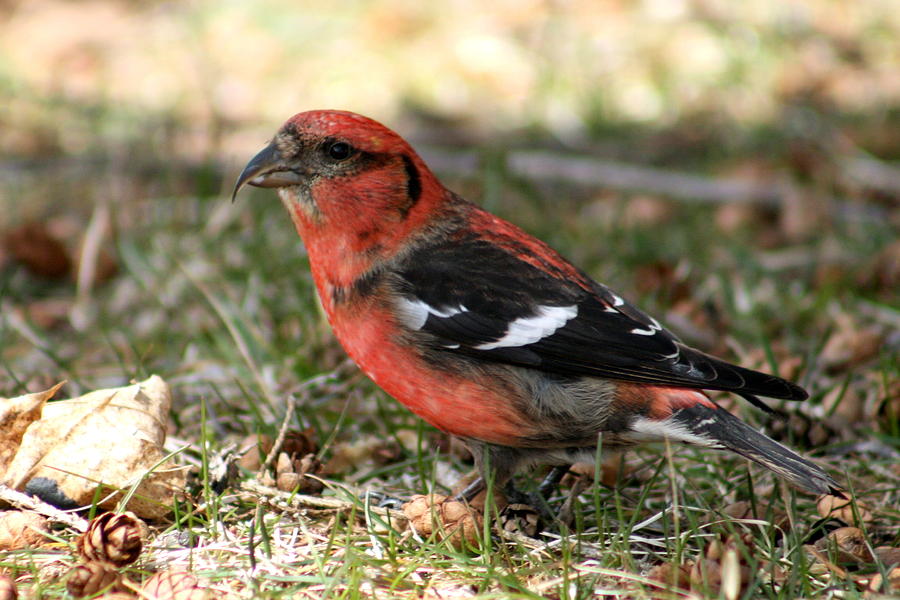
TwoBarred Crossbill Photograph by Brett Friend
It is set 2-20 m above ground against the trunk of a conifer, typically spruce. On occasion it is placed at the end of a branch. Clutches are three to four eggs. The diet consists mainly of conifer seeds, buds, berries and shoots, chiefly of larch and spruce but it also takes a range of invertebrates and larvae (Clement 2016).

Blogbirder Twobarred Crossbill; Adult Males; Uppsala; 24th January 2012
Two-barred Crossbill bird information Values; Conservation status: LC - Least concern: Synonyms: White-winged Crossbill, Nearctic White-winged Crossbill: Order: Perching birds / Passeriformes
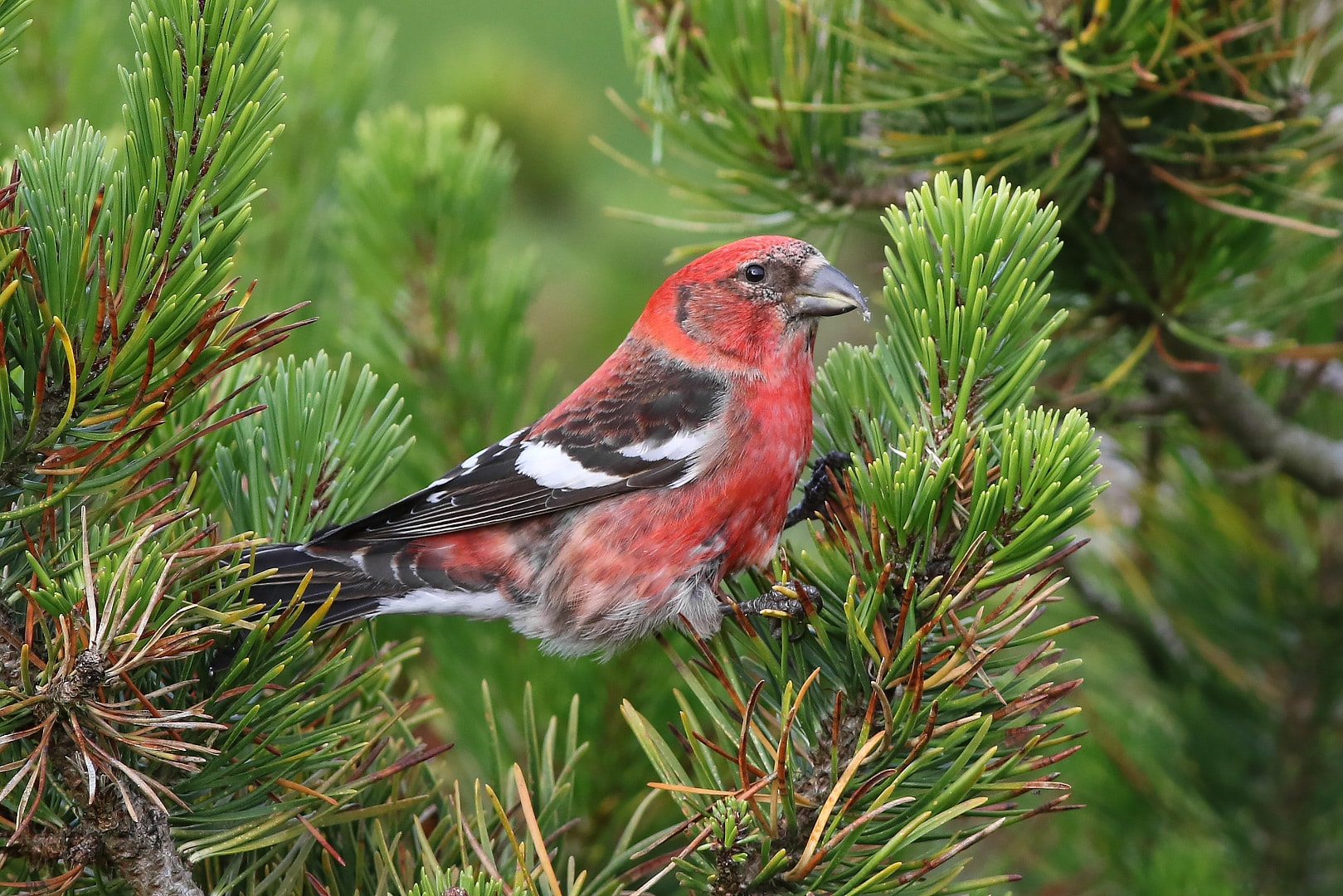
Twobarred Crossbill by David Cooper BirdGuides
Genetic research on their DNA failed to reveal any difference between any of the crossbills (including the morphologically distinct two-barred), with variation between individuals greater than any difference between the taxa.
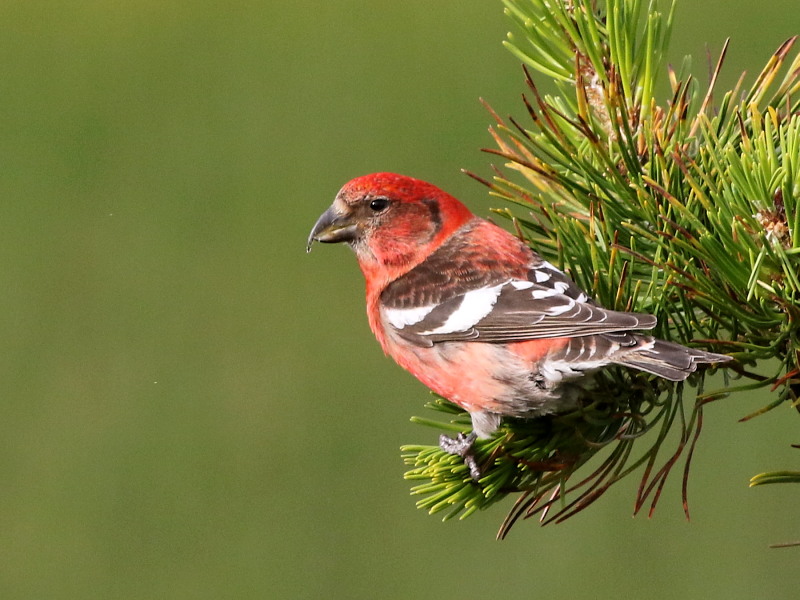
Twobarred Crossbill by David Cooper BirdGuides
Stocky, large-headed finch with a unique crossed bill. Males are pinkish-red with black wings and two bold white wingbars. Females yellowish overall. Nomadic; breeds at any time of year, whenever there is enough food available. Prefers spruce cones. Red Crossbill also has a crossed bill, but is duller overall without white wingbars. Often in small flocks. Rarely visits feeders. Listen for.

Twobarred Crossbill (Loxia leucoptera Stock Photo Alamy
LC Two-barred Crossbill Loxia leucoptera Summary Text account Data table and detailed info Distribution map Reference and further resources Family: Fringillidae (Finches) Authority: Gmelin, 1789 Red List Category Click here for more information about the Red List categories and criteria Justification of Red List category
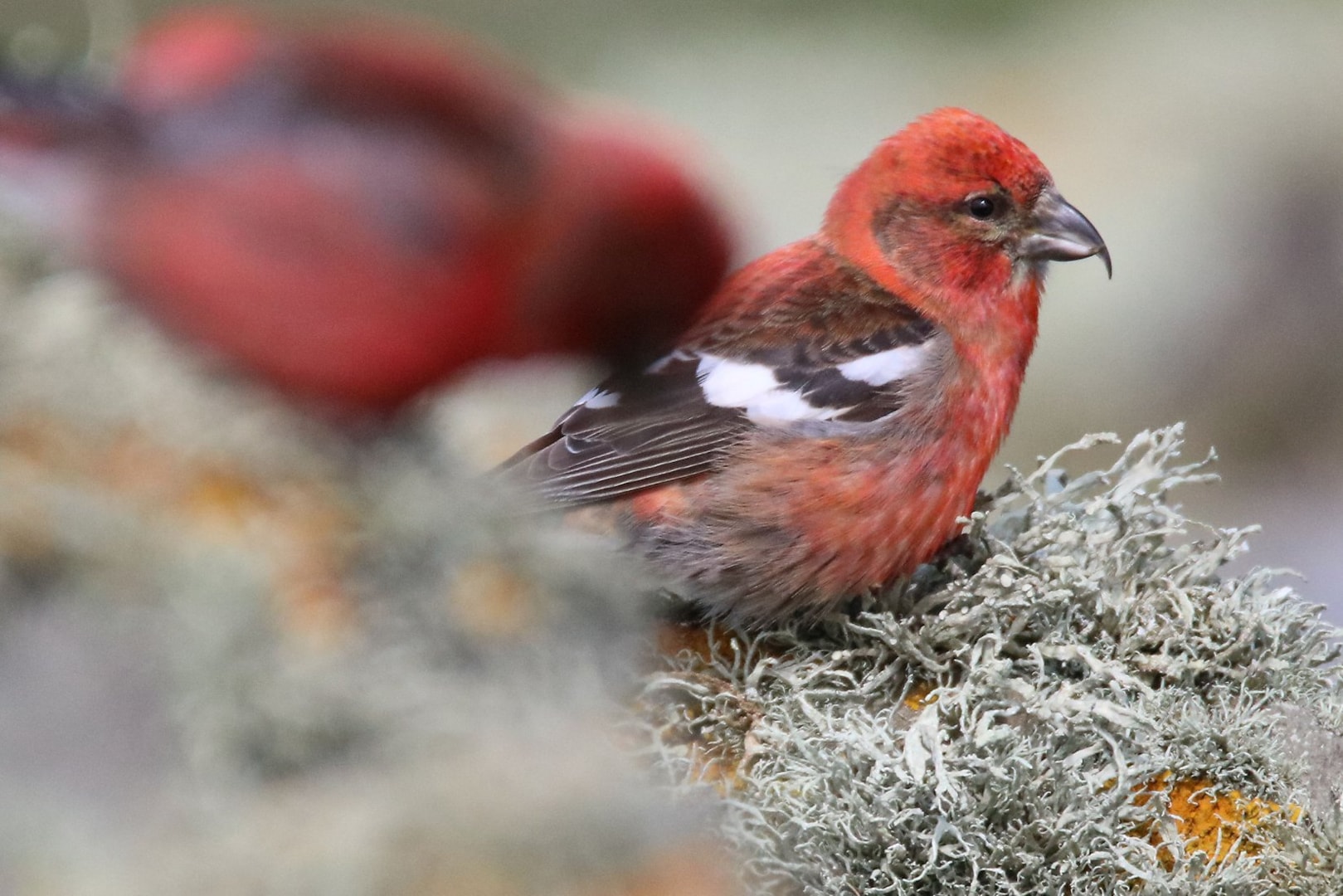
Twobarred Crossbill by Donald Robertson BirdGuides
The record-breaking Two-barred Crossbill irruption in Shetland, July-August 2019. Publish date: 12/08/2019. Dave Cooper, Brydon Thomason & Rob Fray summarise 2019's unprecedented arrival of Two-barred Crossbills to the archipelago, assessing the numbers involved and looking at possible causes.
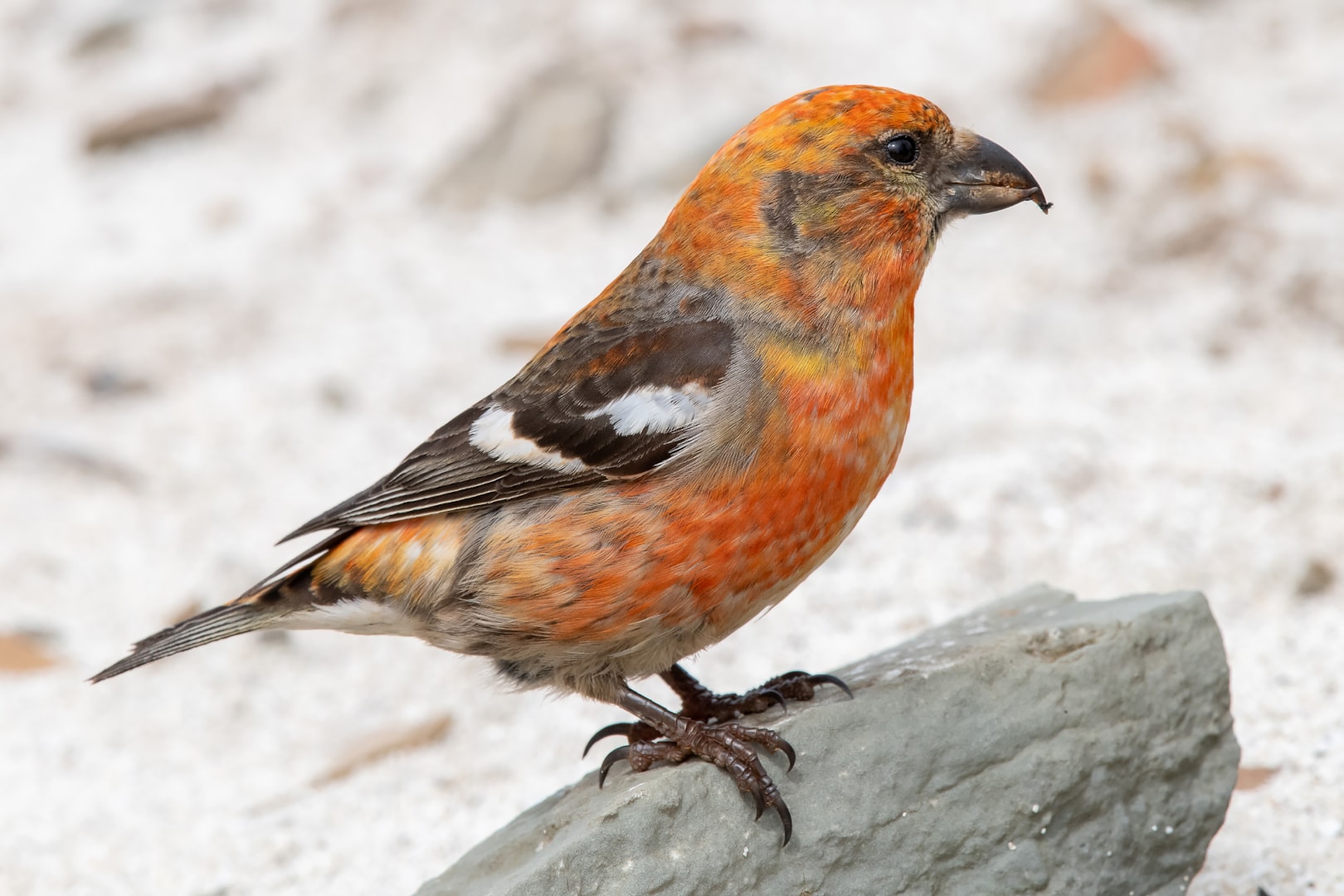
Twobarred Crossbill by David Bailey BirdGuides
Holarctic. Polytypic. OVERVIEW There were invasions of this species to the British Isles in the winters of 1845-46 and 1890-91. A review was carried out with the results published in 2006 by the BOURC ( Ibis, 149, p. 194) resulting in all records prior to 1st November 1845 being rejected for varying reasons. This species is a larch-cone specialist.

Twobarred Crossbill by John Irvine BirdGuides
Description The two-barred crossbill is 14.5-17 cm (5.7-6.7 in) in length and weighs 25-40 g (0.88-1.41 oz). It has short legs, a forked tail, a crossed bill and two prominent white wing-bars. The male of the nominate subspecies has forehead, crown, nape and upper-parts bright raspberry-red.

Twobarred Crossbill by John Irvine BirdGuides
Two-barred crossbills have chocolate legs, light brown beaks, and dark chocolate irises. Appearance: The brightest and least crossbill originated in Finland. Beak lesser than that of further crossbills, and has 2 characteristic white stripes on wings.
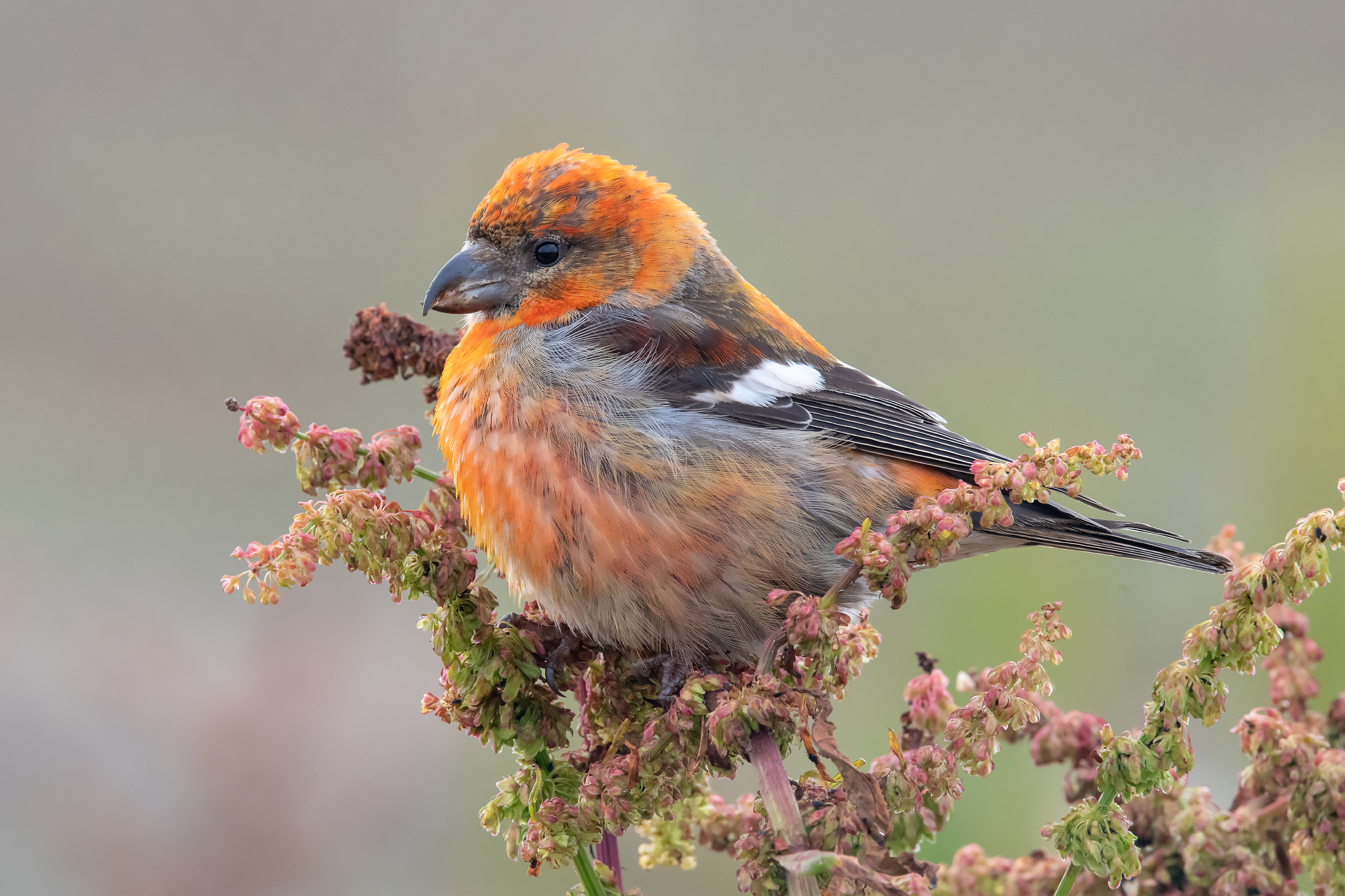
Details Twobarred Crossbill BirdGuides
Massive Southern Invasions by Northern Birds Linked to Weather Shifts From Many, One: How Many Species of Redpolls Are There?
A gem of the northern woods, White-winged Crossbills often first appear as a bounding, chattering flock moving between spruce trees.
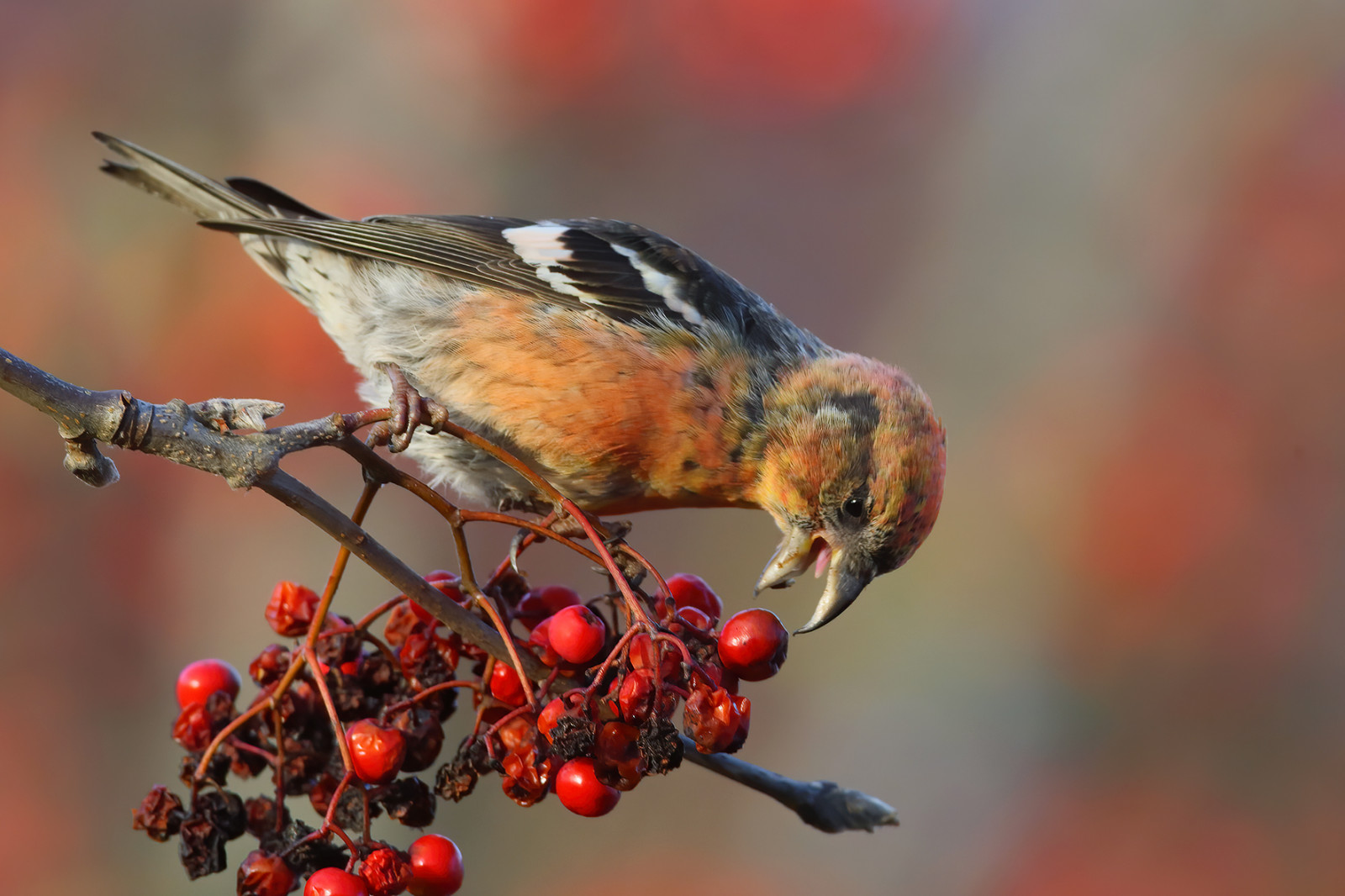
Twobarred Crossbill (Loxia leucoptera) Birdingplaces.eu
In Europe, the White-winged Crossbill is recognized as the "Two-barred" Crossbill. This Old World kind is greater than New World birds, with more extensive beaks, limited black in the feathers, various cries. The two forms are presently viewed as identical species, though they may be separate species.
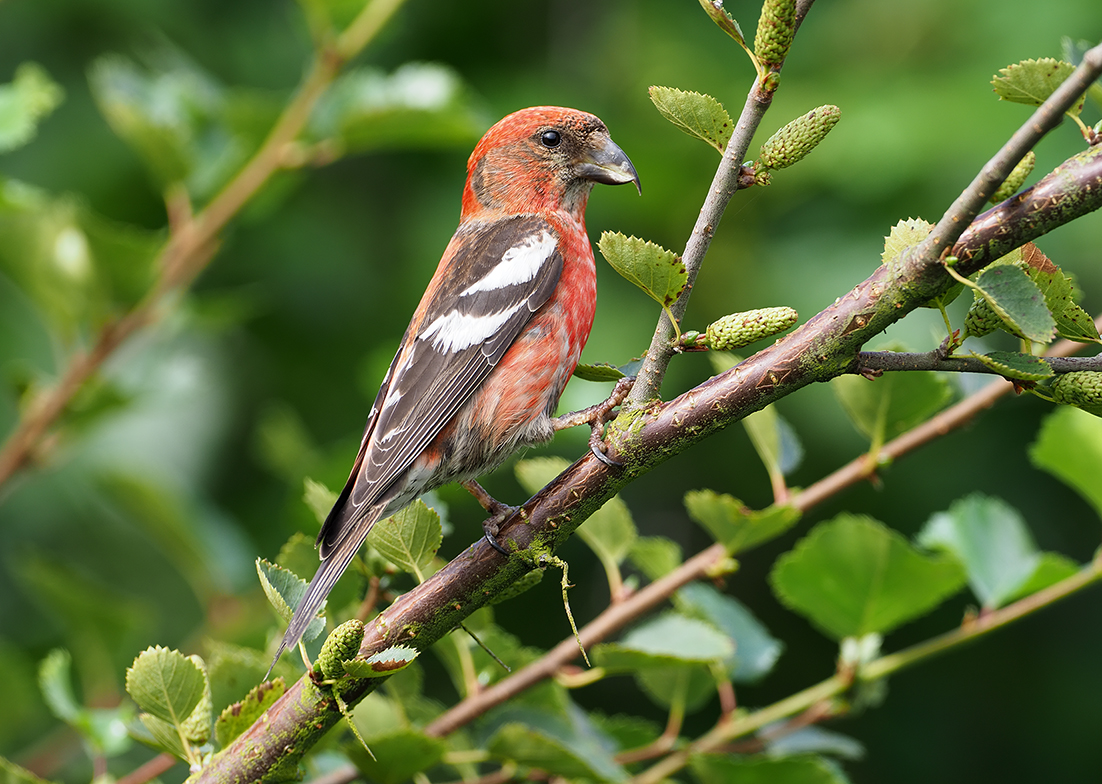
Details Twobarred Crossbill BirdGuides
The two-barred crossbill or white-winged crossbill (Loxia leucoptera) is a small passerine bird in the finch family Fringillidae. This bird breeds in the coniferous forests of Alaska, Canada, the northernmost United States and across the Palearctic extending into northeast Europe. It nests in conifers, laying 3-5 eggs.
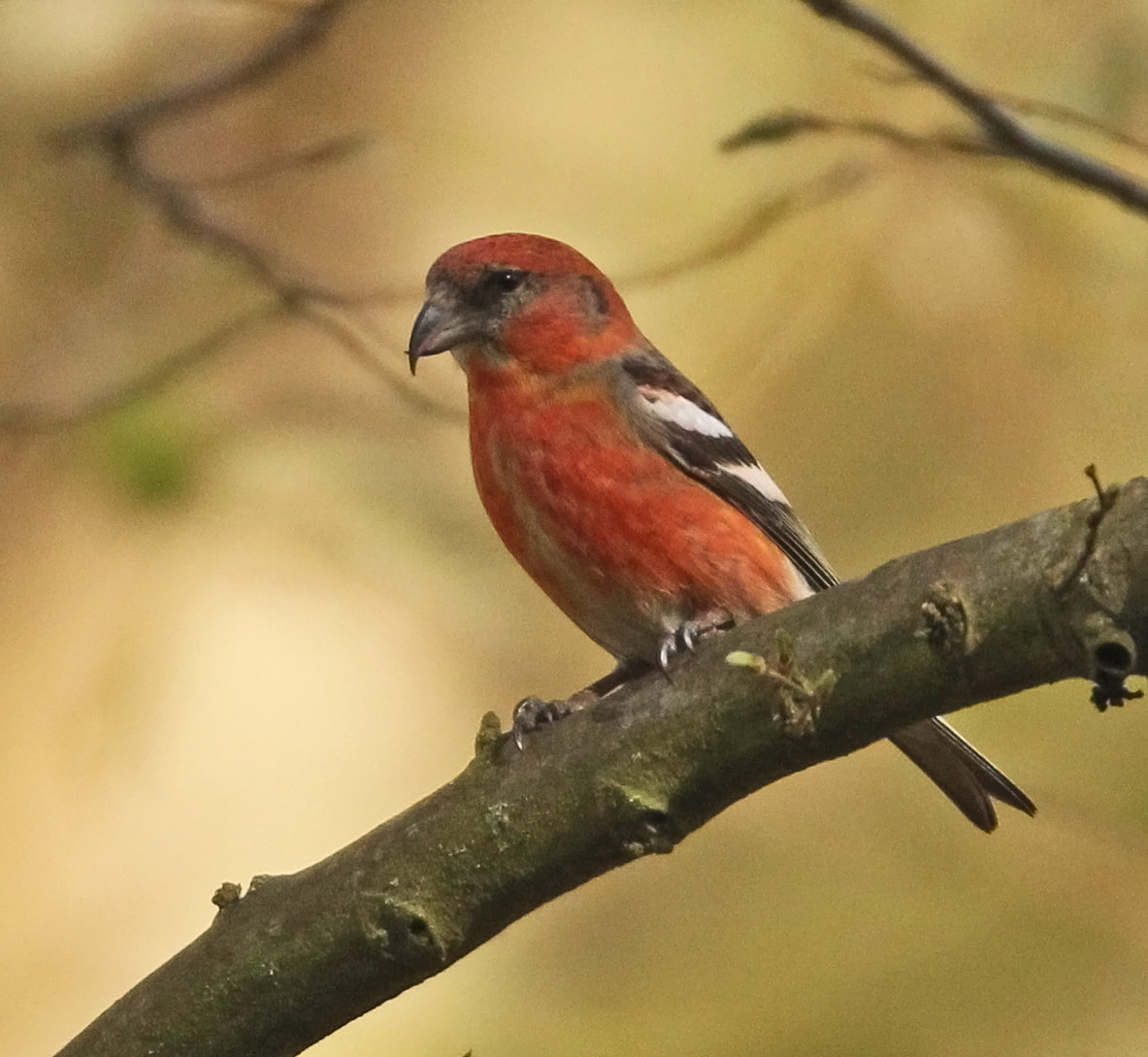
Twobarred Crossbill by Ian Clarke BirdGuides
Description The two-barred crossbill is 14.5-17 cm (5.7-6.7 in) in length and weighs 25-40 g (0.88-1.41 oz). It has short legs, a forked tail, a crossed bill and two prominent white wing-bars. The male of the nominate subspecies has forehead, crown, nape and upper-parts bright raspberry-red.

Twobarred Crossbill by Mick Kemp BirdGuides
Two-barred Crossbill Loxia leucoptera bifasciata (Gmelin 1789). Appearance: Medium-sized finch red (adult males), yellowish-red (immature males) to greyish-green (females and juveniles) finch with distinctive mandibles curved and crossed at the tip. Distribution: Northern Scandinavia to Siberia Taxonomy: Two-barred Crossbill Loxia leucoptera bifasciata-> N Europe to E Siberia and NW China